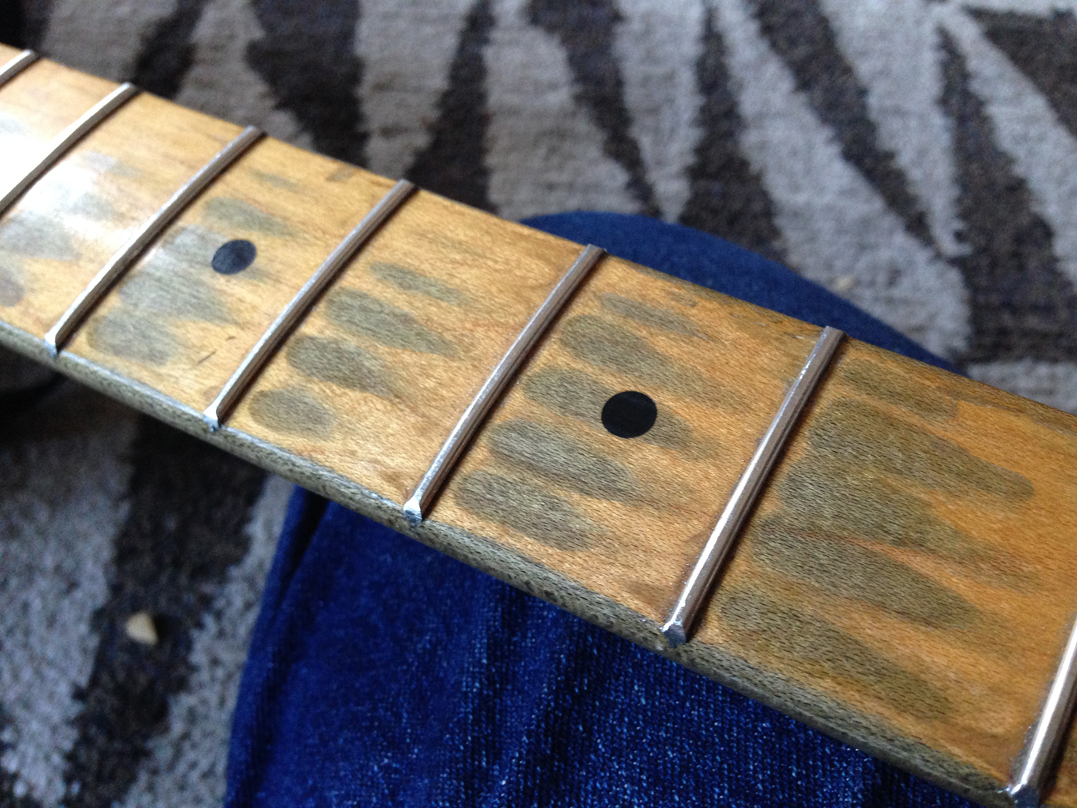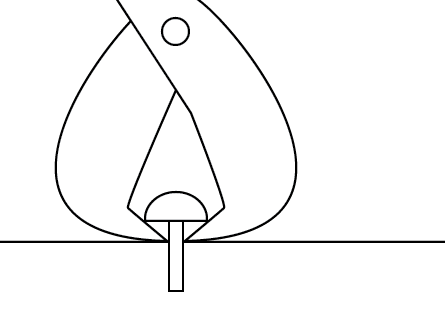Soulweb
Active member
- Joined
- May 4, 2005
- Messages
- 1,827
Hey all. I know this is the Les Paul tech area, but I figured I might get some good advice in here. Here is my quandry...
I have an opportunity to acquire a guitar. It's a hodge-podge strat. Body may or may not be Fender. All electronics and pickups were installed by Seymour Duncan back in the 80's. The neck is custom built non-Fender maple fretboard neck. I want to say it's Glendale (same manufacturer of the hardware) but I forget.
Why am I enamored with this guitar? It belongs to a very good friend/mentor of mine. The guitar has toured the world with a fairly well known blues band. Has shared the stage with everyone from Hubert Sumlin, to BB King, to Albert King, Albert Collins, ...the list of roots blues luminaries is quite long. So I really want to keep the neck if possible.
The owner of the guitar played this guitar until the frets were nearly flat. It frets out on bends. It buzzes. Simply put, the frets are gone. Was played well longer one would imagine it could have been.
These days the strat that's on album covers and videos is just banging around a house. Never in a case. Never played.
A year ago, when the owner needed money, he offered it to me. I told him I could never take it away from him. ...Now that I'm moving half a country away and won't have my weekly jams with him I'm getting sentimental. I know that the strat would mean far more to me than it does to him.
So...
I want to refret the neck. I have never refret a guitar, but I have built all but the neck of a couple of teles. I have been doing set up work for everyone from friends and family to some practicing musicians who somehow know me. I have built a few chessboards, clocks, music boxes, etc. Not that it's at all similar, but it does say that I can read and follow instructions. I have patience and I know how to measure 6 times to cut once.
I have always wanted to learn how to refret a guitar.
I have read that maple fretboards in particular are a real pain in the ass. Not that they are more difficult, but they are far more labor intensive due in large part to the finished fretboard (vs. unfinished rosewood or ebony). I am willing to refinish the whole neck to avoid the chipping issues involved with removing the frets.
That's it. I know this is a really open-ended question. Is this something I can try myself without too much risk beyond a considerable investment in time? Is it true that maple necks really shouldn't be refret and instead, a new neck is best? Are there people out there that are competent and capable of refretting maple necks or is it just something only done for professional musicians?
Any and all advice is welcome. I don't know if it's just stupid to attempt this job on my own. Or if it's even worth sending out to have someone else refret it. The guitar itself has seen the world and been on stage with most of my guitar heroes. I'd hate to have to replace the most intimate part of the guitar (the neck) as it just wouldn't be the same.
I have an opportunity to acquire a guitar. It's a hodge-podge strat. Body may or may not be Fender. All electronics and pickups were installed by Seymour Duncan back in the 80's. The neck is custom built non-Fender maple fretboard neck. I want to say it's Glendale (same manufacturer of the hardware) but I forget.
Why am I enamored with this guitar? It belongs to a very good friend/mentor of mine. The guitar has toured the world with a fairly well known blues band. Has shared the stage with everyone from Hubert Sumlin, to BB King, to Albert King, Albert Collins, ...the list of roots blues luminaries is quite long. So I really want to keep the neck if possible.
The owner of the guitar played this guitar until the frets were nearly flat. It frets out on bends. It buzzes. Simply put, the frets are gone. Was played well longer one would imagine it could have been.
These days the strat that's on album covers and videos is just banging around a house. Never in a case. Never played.
A year ago, when the owner needed money, he offered it to me. I told him I could never take it away from him. ...Now that I'm moving half a country away and won't have my weekly jams with him I'm getting sentimental. I know that the strat would mean far more to me than it does to him.
So...
I want to refret the neck. I have never refret a guitar, but I have built all but the neck of a couple of teles. I have been doing set up work for everyone from friends and family to some practicing musicians who somehow know me. I have built a few chessboards, clocks, music boxes, etc. Not that it's at all similar, but it does say that I can read and follow instructions. I have patience and I know how to measure 6 times to cut once.
I have always wanted to learn how to refret a guitar.
I have read that maple fretboards in particular are a real pain in the ass. Not that they are more difficult, but they are far more labor intensive due in large part to the finished fretboard (vs. unfinished rosewood or ebony). I am willing to refinish the whole neck to avoid the chipping issues involved with removing the frets.
That's it. I know this is a really open-ended question. Is this something I can try myself without too much risk beyond a considerable investment in time? Is it true that maple necks really shouldn't be refret and instead, a new neck is best? Are there people out there that are competent and capable of refretting maple necks or is it just something only done for professional musicians?
Any and all advice is welcome. I don't know if it's just stupid to attempt this job on my own. Or if it's even worth sending out to have someone else refret it. The guitar itself has seen the world and been on stage with most of my guitar heroes. I'd hate to have to replace the most intimate part of the guitar (the neck) as it just wouldn't be the same.





